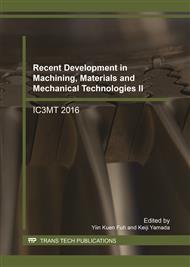p.199
p.205
p.211
p.217
p.223
p.229
p.234
p.241
p.246
Prediction of Static and Dynamic Mechanical Properties of GFRTP Product through Injection Molding
Abstract:
This paper aims at evaluating the prediction accuracy of macroscopic static and dynamic mechanical properties, including damping properties, of glass fiber reinforced thermo plastics (GFRTP) obtained via computer simulations. The prediction procedure is based on the Eshelby-Mori-Tanaka approach using fiber orientation tensor. The prediction accuracy of mechanical properties depends on the fiber orientation tensor. In this paper, we compare that prediction accuracies obtained using measured fiber orientation tensor and using simulated fiber orientation tensor by resin flow analysis. Additionally, we propose a linearized damping model based on the Eshelby-Mori-Tanaka approach and modal strain energy method to predict damping property, as well as a method for evaluating the contribution of the elastic modulus in order to quantitatively comprehend the anisotropic characteristics of GFRTP.
Info:
Periodical:
Pages:
223-228
Citation:
Online since:
August 2017
Price:
Сopyright:
© 2017 Trans Tech Publications Ltd. All Rights Reserved
Share:
Citation:


